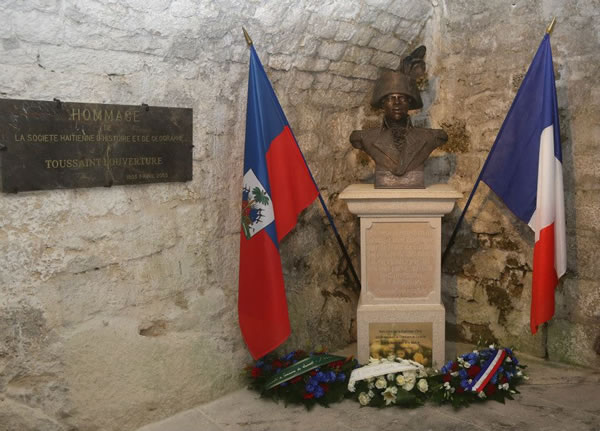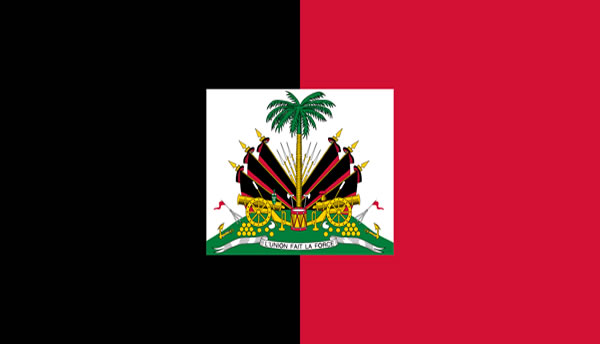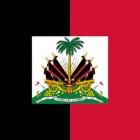ADVERTISEMENT
haitian flag
Haitians, the second largest black immigrant group in the US
Did you know that Haitians and Haitian-Americans represent the second largest black immigrant group living in the United States today?
Center for American Progress estimated that there are 3.7 million black immigrants currently in the United States. With the number of Haitians living in the US estimated at 676,000, we are only second to Jamaicans whom their number is estimated at 693,000. We may well surpass the Jamaicans if you want to take in consideration the Haitians living without legal documentation.
- 48 percent of all black immigrants come from the Caribbean,
- 43 percent come from African countries,
- 3.6 percent come from South America.
In 2015, there were about 676,000 Haitian immigrants in the United States. It was a significant rise from the 2010 figure of 587,000. Haitians account for nearly 2% of the U.S. foreign-born population. Out of the total 3.7 million immigrants in the U.S, 8.8% of the immigrant population are black. They come from a diverse group of countries, primarily in the Caribbean, Latin America-- 48% of them come from the Caribbean, 43% of African countries, and 3.6% from South America. Recent statistics show that the largest individual home countries of black immigrants in the United States today are Jamaica (693,000), Haiti (668,223), Nigeria (306,874), Ethiopia (244,924), and Trinidad and Tobago (242,661). In 2015, there were 619,000 unauthorized black immigrants living in the U.S. As per Centre for American Progress Report, about 29% of the black immigrants aged 25 and older hold a bachelor's or advanced degree, similar to the rate for all immigrants (30%) and overall U.S. population. Black immigrants from Africa are more likely than Americans overall to have a college degree or higher.
It is important to note that there were no numbers of Haitian immigrants before 1932 because then Haitians were the classified as Caribbean immigrants. Haitians started immigrating to the United States in the early 1800s, but did not receive much attention until the 1950s and early 1960s when Haitian immigration to the U.S. began to increase visibly. While just 5,000 Haitians lived in the United States in 1960, beginning in December 1972, a stream of Haitian "boat people" fled the brutal Duvalier dictatorship in Haiti for the United States. In May 1981, U.S. immigration officials began detaining all undocumented Haitians without the possibility of bond.
During 1950s and 1960s, the migrated Haitians were professional and highly-skilled workers, the Haitian educational and economic elite that were exiled by Duvalier. In the mid 1970s, Haitian immigrants were lower-middle class (known as boat people). Like many Latino groups of immigrants, Haitian immigrants initially intended to return to their homeland, but cannot because of unstable political and poor economic reasons.
Children sent home from school for wearing t-shirts with Haitian flag
5.18.16 - Collier County, Florida. Six children sent home from school for wearing t-shirts with the Haitian flag and national coat of arms on Haitian Flag Day.
Five school girls were sent home for wearing T-shirts with the Haitian flag and national coat of arms on Haitian Flag Day, because it was a breach of the Collier County school district's student code of conduct. However, according to such code of conduct, only four flags can be worn in school: The United States flag, the POW/MIA flag, the Florida state flag, and the school's flag... but no Haitian flag. The POW/MIA flag was designed during the Vietnam War, as a symbol of national concern about U.S. military personnel who were Prisoners Of War (POW) and those who are still Missing in Action (MIA). The students later said, they felt discriminated, because, their parents were from Haiti. The Haitian Flag day is indisputably a symbol of general pride for all people of Haitian descent. Every year, it is observed in Haiti and in a number of U.S. cities with large populations of Haitian Americans. It marks the day (May 18, 1803) when the first Haitian flag was flown during the slave revolt against the French that led to the nation's independence. The school is situated in the town of Immokalee, Florida, where 8.9% of the people are Haitian descent.
Student told to remove Haitian flag bandana at school
Here is a case where authorities at Orange County Middle School told a Haitian student to remove Haitian flag bandana at school.
Mitchpaelle Quetant, a student at the Meadowbrook Middle School in Orange County was upset when she was told by the school administrators to take off a bandana of the Haitian flag while she was going to celebrate the Haitian Flag day on May 18th. She was sent to school suspension when she refused to take off the flag. As per the school authority's dictum, the national flag was not the cause of the problem, but wearing bandana on campus was against the conduct of the school. The school principal has shown the Eyewitness News representatives that there were many students wearing shirts showing the Haitian flag and they were never asked to change. However, frustrated Quetant has said, the authority don't let us come to school and display our pride for our country.
University of Miami students in Little Haiti
Here is a picture of some University of Miami students helping in painting in Little Haiti.
University of Miami (UOM) students assembled on Saturday to launch Butler Center for Service and Leadership's Orientation Outreach Day of Service.
UOM's project is to prettify the Little Haiti Cultural Center (LHCC). LHCC was selected due to the impact that a majority of projects have on the community.
UOM wants students to familiarize and integrate themselves into the fabric of Miami city life. LHCC is teaming with North East 2nd Avenue Partnership.
Fort de Joux in France in Honor of Toussaint Louverture with Haitian Flag
Here is a picture of Fort de Joux in France where Toussaint Louverture spent his list few years in prison under harsh condition. This day, it is another story all together. He is now considered a hero and both Haitians and French want to claim him.
Toussaint Louverture was known to his contemporaries as "the Black Napoleon". To abolish slavery from Haiti he fought against the best-trained European forces, including armies from France, England and Spain and France. He is the only successful revolutionary slave leader in modern history and the first Black to become the governor of a colony. He allied with France and became a dominant political and military leader in the French colony; ruled Saint Dominque as an independent state. When he drafted a constitution emphasizing abolition of slavery, he earned the ire of Napoleon Bonaparte. He was captured and on August 25, 1802, sentenced to a cold, isolated cell in the French mountain prison at Fort de Joux so that he would be forgotten from his countrymen behind his secluded prison. He died of pneumonia in his solitary cell within his seven months of captivity on April 7, 1803. He wrote a memoir during his confinement where he compared Napoleon's plan of forceful limiting him with phrases as--"cut out one's tongue and tell him to talk","bury a man alive". On October 29, 2014, the Haitian President Michel Martelly paid tribute before the statue of this Haitian independence hero at Fort de Joux in France and placed a Haitian flag in his honor.
Toussaint Louverture's Statue With French and Haitian Flag at Fort de Joux
Here is a statue of the Haitian hero Toussaint Louverture standing proudly in Fort de Joux in France With French and Haitian Flag.
Francis Domenica Breda or Toussaint Louverture (1743-1803) as he was more popularly known, is one of the great leaders in the history of the Haitian revolution. He was born in a slave family and the first Black to become the governor of a colony. Toussaint was a self educated revolutionary who defeated Europe's best-trained forces, including armies from France, England and Spain and France. After securing its independence, Toussaint renamed St. Domingue as "Haiti" and his policy on abolition of slavery eventually aroused the ire of Napoleon Bonaparte. On June 7, 1802, He was captured in Saint Domingue by an act of deceit by a French General of Division named Jean Baptiste Brunet. Toussaint, who had never remained far from his warm sea-level Caribbean life, was transported to Fort de Joux in France by ship and sentenced to a cold solitary cell measuring 6,50 x 3,90 meters. He was one of the fort's most noted prisoner. He suffered from loneliness and died in the prison out of a certain malady of the lung. Today, the fort is a tourist site, tourists come to pay tribute to his statue at Fort de Joux gifted by Haiti to mark the bicentenary of his death. The statue has French and Haitian flags on both sides.
Haitian Flag side by side with German Flag, a reminder of Luders Affair
Here is a picture of the Haitian Flag flying in Germany on October 29, 2014 side by side with the Germain flag. This took place during a visit of President Michel Martelly to Germany.
Today, we can all be proud of this. As you can see, the Haitian Flag flying very high there. This is of historical proportion. The Haitian Flag has not always been given this high respect by some Germans. We need to go back in history to December 6, 1897 and read Luders Affair to understand the issue between Haiti And Germany.
Germany bullied the tiny island of Haiti in 1897 in an incident called the Luders Affair, which began when Germany became insulted by Haiti pledging its allegiance to Germany's enemy in the French-Prussian war. Germany began its campaign of humiliation by coercing Haiti to start repaying its debts to German merchants, easily accomplished since Germany held Haitian warships hostage until Haiti's debts were cleared. When the Germans finally returned the warships they had desecrated the Haitian flags with feces.
But the Germans weren't done punishing Haiti yet. A Haitian-German, Emil Luders, was arrested on Haitian soil and convicted, sentenced to 30 days in jail for assault and battery on a Haitian soldier. Luder appealed his conviction and his sentence was extended a year beginning October 14, 1897. Infuriating Germany's Charge d'Affaires, Count Schwerin, he ordered Luders be released immediately, also demanding President Simon Sam pardon Luders.
It got worse for Haiti. Two of Germany's warships, the Charlotte and the Stein, sailed into Port-au-Prince harbor, demanded a 21-gun salute without giving one in return, and extracted $20,000 in ransom money for Luders, and a vow he be allowed to return home. Schwerin also wanted an official letter of apology from the Haitian government. If these conditions were not fulfilled within four hours the German warships would bomb the harbor. The Haitian government had no time to seek foreign aid, so it was forced to fly a white flag at half-mast to indicate its compliance with Germany's demands
Read Luders Affair here:
haitiobserver.com
Haitian Flag Under Francois Duvalier changed in 1964 to black and red
Let me make this clear. neither Francois Duvalier nor his son Jean Claude Duvalier created the new Haitian flag.
In 1964, the Haitian Dictator Francois "Papa Doc" decided to abandon the Red and Blue flag that has been adopted by haitians for over a century and return to the black and red colors. which was flown for the first time by Jean Jacques Dessalines, the founding father of the nation.
From 1964 to 1986 the Black and Red flag was the official flag of the nation. It would not change until the end of the Duvalier reign, when Jean Claude Duvalier went into exile in France. At that point, it was restored to red and blue.
Throughout the history of the Haitian flag, whether the colors are red, blue or black, it has remained a symbol of pride for many Haitians. Some would make you believe that the flag is deeply rooted in the Vodun religion and Jean Jacques Dessalines was in a temple of the religion in Merote, Haiti when he created the flag. Following the death of Dessalines, the country was divided with Henri Christopne in the North, holding on to the Black and Rd, while Petion in the South, red and Blue flag
Haiti Flag day in 1964 - Cap-Haitian
This is a Parade for Haitian Flag day celebrated in the city of Cap-Haitian in 1964.
This was the time when "Papa Doc " Francois Duvalier was in power in Haiti.
This was the year when a constitutional referendum was held in Haiti, specifically on 14 June 1964. The new constitution made President François "Papa Doc" Duvalier President for Life. With that constitution, he obtained absolute power and the right to name his successor.
Katherine Flon and a Painting of the Haitian Flag
Here is a picture of the Haitian flag with the person who has credit for its creation, Katherine Flon Haitian.
The town of Arcahaie became a famous town due to its historical heritage. This was the place that hosted the 1803 Congress for teh independence of Haiti. The exact date for taht congress was May 14 to May 18.
During the congress, Jean-Jacques Dessalines tore up the French flag and replaced it with a blue and red flag. This is how the Haitian Flag was created.











 Who will be the next president of Haiti?
Who will be the next president of Haiti?  Five personalities of the Haitian musical world awarded
Five personalities of the Haitian musical world awarded  Haitian Flag Under Francois Duvalier changed in 1964 to black...
Haitian Flag Under Francois Duvalier changed in 1964 to black...  Commissioner Frantz Pierre indicted for accepting bribes
Commissioner Frantz Pierre indicted for accepting bribes  Meet Haitian-American professional baseball pitcher Touki...
Meet Haitian-American professional baseball pitcher Touki...  Jean Henry Céant deposited documents in Parliament for...
Jean Henry Céant deposited documents in Parliament for...  Paul Eugène Magloire, born in Quartier Morin
Paul Eugène Magloire, born in Quartier Morin  Partial list of privileges enjoyed by Government officials in...
Partial list of privileges enjoyed by Government officials in... 



